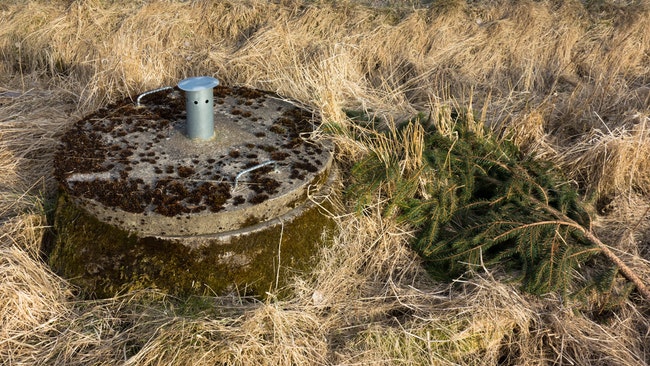 More Oregonians will have a chance to borrow for repairing leaking septic systems under a renewed state program. (Wikimedia Commons)
More Oregonians will have a chance to borrow for repairing leaking septic systems under a renewed state program. (Wikimedia Commons)
The invisible price of a failing home septic system is a foul smell.
The very visible mark is ground softening atop the underground sewage tank resulting in leaks into waterways and repair and replacement costs that can range from $25,000 to $65,000. That’s a cost typically borne by the home or business owner.
A loan program from the state Department of Environmental Quality (DEQ) and the nonprofit lender Craft3 is getting new funding to help. They’ve received $2 million from the Oregon Legislature to dole out to people who need help paying for the fixes, starting this month.
This will restart a program started in 2016 and that ran out of money last year.
But the problem of aging and ailing septic systems in Oregon touches far more people than there is loan money enough to help.
There are an estimated 450,000 septic systems in use in the state, according to DEQ and the Environmental Protection Agency (EPA). Ten to 20% of septic systems, often serving homes that can’t connect to a local sewer system, fail each year, according to the EPA.
That means an additional 45,000 to 90,000 septic systems are added each year to the inventory of failing systems. There is no formal count for the total number of systems that have failed in Oregon.
Between 2016 and 2020, DEQ and Craft3 issued loans to repair just over 180 septic systems. Many were in rural and coastal parts of the state.
Deb Mailander, statewide onsite programs manager for DEQ wrote in an email, “There are few water quality issues more close to home than wastewater treatment. For those in rural areas, functioning septic systems are critical to protecting public health and waters of the state.”
About one-third of households in Oregon rely on septic systems to carry waste from their kitchens and bathrooms to underground tanks, according to the DEQ. There, it can be stored and bacteria can break down most of it. Many of these systems today are 50 or more years old, and need extensive upgrades or replacement.
Some have been impacted by wildfires. Extreme heat can melt the plastic now being used in the leach lines, where water is released into the earth from the tanks after waste has been decomposed, according to Karen Lewotsky, water program director at the Oregon Environmental Council.
Lewotsky said the loan program is “an investment warranted not just from a rural equity point of view but from a public health point of view writ large.”
Leaks from broken septic systems can cause fecal matter, E. coli and nitrate pollution to get into waterways and coastal habitats, affecting drinking water that makes animal and humans sick.
The loan program between DEQ and Craft3 initially launched in 2016 and ran for four years before running out of money. In that time, DEQ and Craft3 provided more than $3.6 million for 187 loans. That’s about 47 new or improved septic systems a year.
“In a perfect world, banks would give people home equity loans for these,” said Adam Zimmerman, Craft3 CEO in Portland.
But not everyone will qualify for this round of financingMany of the loans Craft3 issues go to people who would otherwise not receive one from a conventional bank because of bad or no credit.
“There’s not a profitable way to make loans like this,” Zimmerman said.
One-third of household recipients of the Craft3 loans between 2016 and 2020 were low income, defined as people making 80% or less of an area’s median income. The loans are available to homeowners, RV parks and small businesses.
To be eligible for the loans, a septic system must be at least 25 years old, be failing or the home or business owner must be under orders to fix it by local health officials.
The average loan given out between 2016 and 2020 was about $20,000. All of the loans also include a $2,000 reserve to help cover future maintenance.
The lowest income applicants get priority, according to Zimmerman, and some of the recipients will never have to make payments. For some who need to fix the septic system as a condition of selling their homes, they can make the loan due on a title transfer to new owners.
In a fact sheet on the septic loan program, DEQ wrote that failing septic systems, and the sewage that surfaces because of them, are the most common source of complaints they get about water quality from the public.
Oregon Capital Chronicle is part of States Newsroom, a network of news bureaus supported by grants and a coalition of donors as a 501c(3) public charity. Oregon Capital Chronicle maintains editorial independence. Contact Editor Les Zaitz for questions: [email protected]. Follow Oregon Capital Chronicle on Facebook and Twitter.
STORY TIP OR IDEA? Send an email to Salem Reporter’s news team: [email protected].









